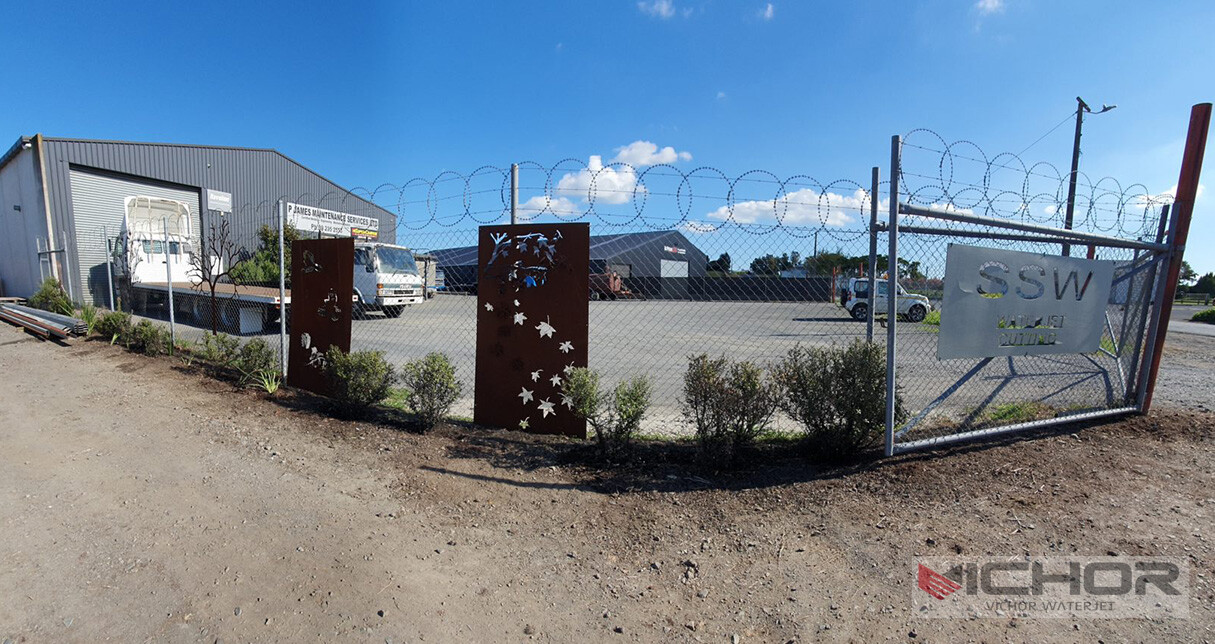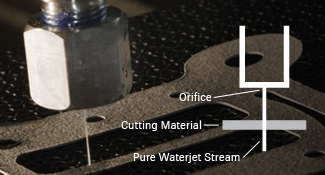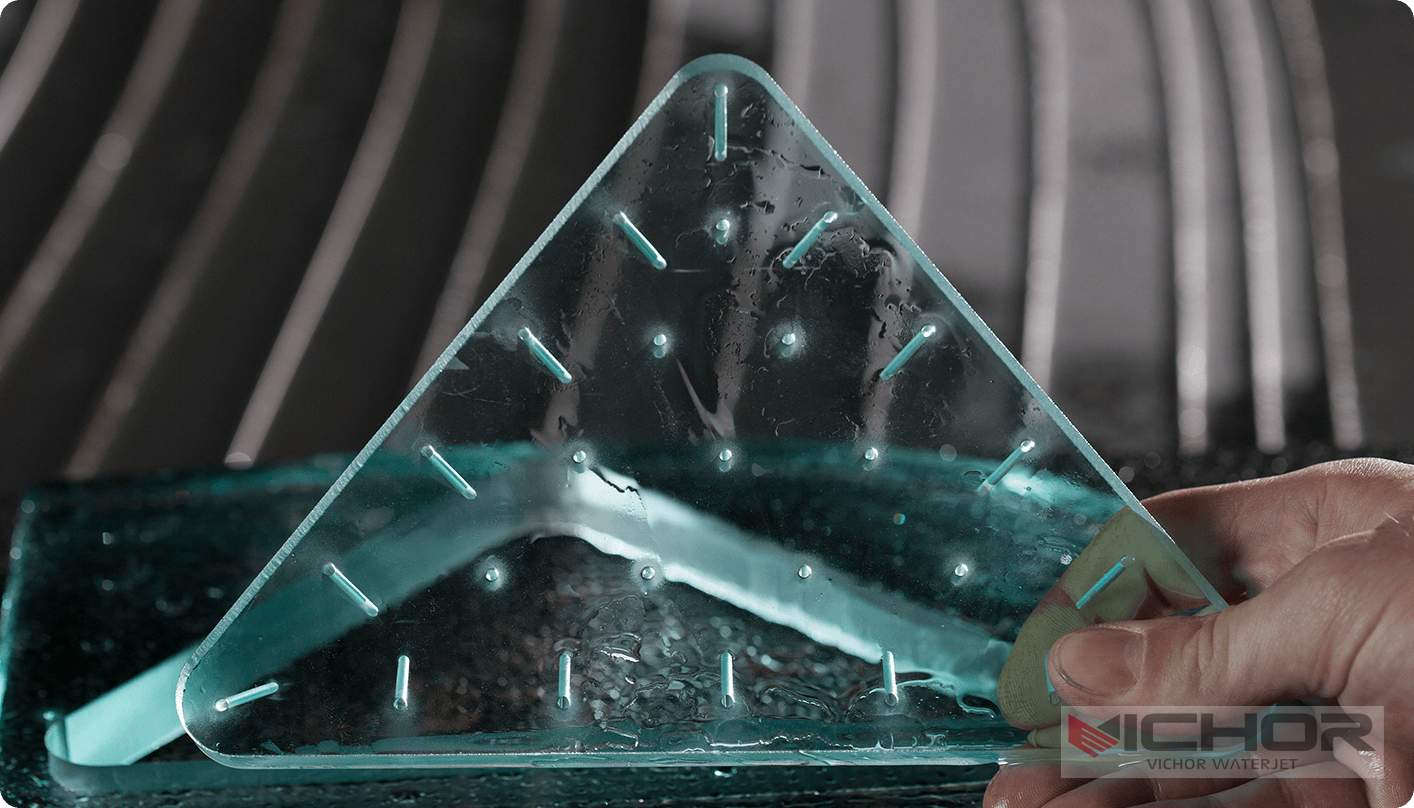
At Home Water Jet: Your Complete Guide to Residential Pressure Washing Systems
The exterior of your home is constantly battling the elements – dirt, grime, mold, mildew, pollen, and stubborn stains accumulate relentlessly. Traditional cleaning methods like hoses and scrub brushes often fall short, demanding immense time and effort for lackluster results. Enter the At Home Water Jet – a powerful solution transforming how homeowners tackle outdoor cleaning projects. More than just a high-powered hose, a dedicated residential pressure washer provides the force and versatility needed to restore surfaces efficiently and effectively. This comprehensive guide dives deep into the world of At Home Water Jet systems, exploring their technology, applications, benefits, and essential considerations to help you harness this cleaning power safely and successfully.
1. Understanding the Technology: How an At Home Water Jet Works
At its core, an At Home Water Jet – commonly known as a pressure washer – is a mechanical device that pressurizes ordinary tap water to create a high-velocity stream. This intense stream provides the cleaning power that a standard garden hose simply cannot match. Here’s a breakdown of the key components and process:
Motor or Engine: Provides the power. Electric motors (plug-in or battery-powered) are common for light to medium-duty At Home Water Jet units, being quieter and requiring less maintenance. Gasoline engines offer higher power output and portability, ideal for larger homes or tougher jobs but are louder and need fuel/oil maintenance.
Water Pump: The heart of the system. Driven by the motor/engine, the pump draws water from your faucet (or a tank) and significantly increases its pressure. Most residential pumps are axial cam or triplex plunger types.
High-Pressure Hose: Reinforced to withstand the intense internal pressure generated by the pump, safely delivering the pressurized water to the spray gun.
Spray Gun & Trigger: The user interface. The gun allows you to control the flow of pressurized water via the trigger. It connects to the wand.
Spray Wand: A lance that extends your reach. The tip of the wand is crucial.
Spray Tips/Nozzles: These detachable tips determine the spray pattern and intensity. Common types include:
0-Degree (Red): A pinpoint, high-impact jet for extremely tough stains or paint removal (use with extreme caution on surfaces).
15-Degree (Yellow): A narrow fan pattern for heavy-duty cleaning like concrete or stripping.
25-Degree (Green): A versatile fan pattern for general cleaning of decks, siding, and driveways.
40-Degree (White): A wider, softer fan for delicate surfaces like windows (with care), cars, or rinsing.
Soap/Detergent (Black): A low-pressure tip designed to apply chemical cleaners effectively.
Detergent Tank/Injection System: Many At Home Water Jet models include a reservoir and a siphon system that draws in cleaning solutions or detergents, mixing them with the water stream for enhanced cleaning power on greasy or organic stains.
The fundamental principle is force multiplication. By concentrating water into a high-speed jet, kinetic energy replaces brute force, blasting away contaminants bonded to surfaces far more effectively than low-pressure water flow.
2. Key Features and Specifications: Choosing the Right At Home Water Jet
Selecting the ideal At Home Water Jet requires understanding key specifications that define its power and capabilities:
PSI (Pounds per Square Inch): Measures the water pressure. Higher PSI delivers more impact force for tougher jobs.
*Light-Duty (1300-1900 PSI):* Good for cars, patio furniture, small decks, grills.
*Medium-Duty (2000-2800 PSI):* Versatile for decks, siding, fences, driveways, concrete patios.
*Heavy-Duty (2900 PSI+):* Best for large driveways, stripping paint/stains, heavily soiled concrete.
GPM (Gallons per Minute): Measures the water flow rate. Higher GPM cleans larger areas faster by rinsing away dislodged dirt more effectively. It works in tandem with PSI for overall cleaning power (often expressed as Cleaning Units: PSI x GPM). A machine with higher GPM at moderate PSI can often clean faster than a very high PSI/low GPM machine.
Power Source:
Electric: Quieter, lighter, lower maintenance, ready to use indoors/outlets available. Generally lower max PSI/GPM than gas. Requires extension cord management. Cordless battery models offer portability but limited run time/power.
Gasoline: More powerful, highly portable (no cords), best for large areas/tough jobs. Louder, requires fuel/oil, produces exhaust fumes (outdoor use only), needs more maintenance.
Pump Type:
Axial Cam: Common in electric and some gas models. Compact, affordable, good for typical homeowner use. Can wear faster under continuous heavy use.
Triplex Plunger: Found in higher-end gas and some electric models. More durable, handles continuous use better, generally longer lifespan. Pricier.
Portability & Storage: Consider weight, size, and whether it has a handle or wheels. Integrated hose/wand storage is a plus. Gas models need fuel storage considerations.
Nozzle Kit: Ensure it includes a variety of spray tips (0/15/25/40/soap) for versatility.
Hose Length & Quality: A longer hose (20-50 ft) increases reach without moving the unit constantly. Kink-resistant hoses are preferable.
Additional Features: Thermal relief valve (protects pump), adjustable pressure settings, onboard chemical tanks, quick-connect fittings, wand extensions, surface cleaners (rotating discs for large flat areas).
Matching these features to your specific home size, primary cleaning tasks, and storage capabilities is crucial for maximizing the value of your At Home Water Jet investment.
3. The Versatility of an At Home Water Jet: Common Applications
The true value of an At Home Water Jet lies in its remarkable versatility. It tackles a vast array of outdoor cleaning challenges:
Driveways, Walkways & Patios: Removes embedded dirt, oil stains, tire marks, moss, algae, and mildew from concrete, asphalt, pavers, and stone. Restores the original appearance and improves safety by removing slippery growths. Using a surface cleaner attachment makes this task significantly faster and more uniform.
Decks & Fences: Effectively strips away old, flaking stain or paint. Cleans deep-seated dirt, mildew, algae, and pollen from wood, composite, and vinyl surfaces, preparing them for refinishing or simply refreshing their look. Use lower pressure and wider tips on wood to avoid damage.
House Siding: Safely cleans vinyl, aluminum, brick, stucco, and fiber cement siding of dirt, grime, cobwebs, and mild mold/mildew. Proper technique (working top-down, maintaining distance, using appropriate tip) is essential to prevent damage. Avoid high pressure on older brick mortar.
Outdoor Furniture & Grills: Revives plastic, metal, and wood furniture. Easily blasts away grease, food residue, pollen, and bird droppings from grills and surrounding areas.
Gutters & Downspouts: Clears leaves, debris, and silt buildup from gutters (use caution on ladders). Can help flush minor clogs in downspouts.
Garbage Cans & Recycling Bins: Eliminates foul odors and sticky residues effectively.
Garage Floors: Cleans oil spills, dirt, and grime from concrete garage floors.
Vehicles: With extreme care and specific low-pressure tips/detergents, a pressure washer can be used for rinsing cars, boats, RVs, and ATVs. Never use high pressure or narrow tips directly on automotive paint, windows, or seals – it can cause severe damage. Always use a dedicated automotive nozzle (usually 40-degree white or wider) and maintain a safe distance.
Pre-Paint/Stain Preparation: Essential for removing dirt, chalk, and loose material to ensure optimal adhesion of new paint or stain.
An At Home Water Jet is a powerful tool for routine maintenance and periodic deep cleaning, significantly enhancing curb appeal and property value.
4. DIY vs. Professional: When to Use Your At Home Water Jet and When to Call the Pros
While an At Home Water Jet empowers homeowners to handle countless cleaning tasks, understanding its limits is crucial for safety and preventing costly damage.
Ideal DIY Projects with an At Home Water Jet:
Cleaning driveways, patios, walkways (using appropriate tips).
Washing decks and fences (using lower pressure and wider tips).
Cleaning outdoor furniture, grills, garbage cans.
Rinsing siding on newer, sturdy materials (with caution and correct technique).
Prepping surfaces for painting/staining (cleaning, not stripping).
Washing cars/boats (using ONLY low-pressure wide-angle tips and proper detergents, maintaining distance).
When to Hire a Professional Pressure Washing Service:
Multi-Story Homes: Working on ladders with a powerful pressure washer is inherently dangerous. Professionals have safety equipment, training, and potentially longer-reach equipment.
Delicate or Historic Surfaces: Old brick with soft mortar, certain types of wood siding (cedar shakes), stucco, or roofing materials can be easily damaged by incorrect pressure or technique. Professionals know the limits.
Extensive Paint/Stain Stripping: While you can strip, professionals achieve faster, more consistent results, especially on large areas, and handle chemical strippers safely if needed.
Severe Mold, Mildew, or Graffiti Removal: Stubborn biological growth or paint often requires specialized cleaning solutions, hot water pressure washers (which most At Home Water Jet units are not), and expertise to eradicate completely and safely.
Lack of Confidence or Experience: If you’re unsure about the correct pressure, nozzle, technique, or chemical for a specific surface, hiring a pro prevents potential damage. They also carry liability insurance.
Complex Projects: Cleaning large commercial properties, delicate landscapes after cleaning, or intricate architectural features.
Your At Home Water Jet is perfect for regular maintenance and smaller, less risky projects. For complex, high-risk, or large-scale jobs, the expertise and specialized equipment of a professional are invaluable investments.
5. Safety, Operation, and Maintenance: Maximizing Your At Home Water Jet Investment
Owning an At Home Water Jet comes with the responsibility of safe operation and proper maintenance to ensure longevity and prevent accidents.
Essential Safety Practices:
Read the Manual: Understand your specific model’s operation, limitations, and safety warnings.
Protective Gear is Mandatory: Always wear:
Safety glasses or goggles (impact-resistant).
Sturdy, closed-toe shoes (preferably waterproof boots).
Hearing protection (especially for gas models).
Gloves for a better grip and protection from chemicals/recoil.
Beware of Kickback: The high-pressure stream creates significant recoil. Maintain a firm, two-handed grip on the spray gun. Start the trigger after pointing the wand where you want to spray.
Never Point at People, Animals, or Electrical Sources: The stream can cause severe lacerations, injection injuries (forcing water/chemicals under the skin), or electrocution. Keep bystanders, especially children and pets, far away.
Maintain Safe Distance: Start farther away from the surface and gradually move closer until you find the minimum effective distance. Getting too close can instantly damage surfaces.
Use the Correct Nozzle: Wider angles (25/40-degree) are safer for most surfaces. Reserve narrow tips (0/15-degree) only for extremely tough spots on durable materials like concrete, using extreme caution. Never use a 0-degree tip on any surface near people, windows, or delicate materials.
Be Mindful of Ladders: Using a pressure washer on a ladder is hazardous due to recoil and hose pull. If absolutely necessary, secure the hose, have someone spot you, and prioritize stability. Consider a telescoping wand instead.
Chemical Safety: Read SDS (Safety Data Sheets) for any detergents. Wear appropriate gloves and eye protection. Never mix chemicals unless specified. Rinse thoroughly after application.
Be Aware of Surroundings: Protect windows, light fixtures, landscaping, and outdoor outlets from high-pressure spray and chemicals. Cover sensitive plants.
Effective Operation Tips:
Pre-Rinse: Use low pressure to wet the surface and loosen loose debris.
Apply Detergent (If Needed): Use the soap tip, apply detergent from bottom to top to prevent streaking. Let it dwell for the recommended time (don’t let it dry).
Rinse Thoroughly: Work top-down using a 25 or 40-degree tip, overlapping your strokes. This prevents dirty water from running down onto cleaned areas.
Work Methodically: Clean in manageable sections.
Test in an Inconspicuous Spot: Always test pressure, nozzle, and chemicals on a small hidden area first.
Critical Maintenance for Longevity:
Never Run Dry: Running the pump without water flow causes immediate and severe damage. Ensure water supply is on before starting the engine/motor. Release trigger to stop water flow before turning off the machine.
Use Clean Water: Avoid using water from ponds or pools that contain sediment, which can damage the pump. Use an inlet filter if your water source is questionable.
Prevent Freezing: If temperatures drop below freezing, you MUST winterize your At Home Water Jet. Pump RV/Marine antifreeze (non-toxic propylene glycol) through the system according to the manual. Store it in a frost-free location. Never leave water in the pump.
Flush After Chemical Use: After using detergents, run clean water through the system for several minutes to rinse out any residual chemicals that could corrode internal parts.
Check and Replace Oils (Gas Models): Regularly check and change engine oil and pump oil (if applicable) as specified in the manual.
Inspect Hoses and Connections: Look for leaks, cracks, or wear before each use. Replace damaged components immediately.
Proper Storage: Drain all water from hoses, gun, and pump. Coil hoses loosely without kinks. Store the unit in a clean, dry place, protected from dust and moisture. Disconnect hoses from the machine if storing long-term.
Annual Check-up: For gas models, consider an annual tune-up.
Following these safety, operational, and maintenance guidelines ensures your At Home Water Jet remains a reliable and powerful cleaning asset for years to come, while protecting you and your property.
An At Home Water Jet system is far more than a luxury; it’s a practical and powerful investment for proactive homeowners. It transforms the arduous, time-consuming task of exterior cleaning into a manageable, even satisfying, DIY project. By understanding the technology – PSI, GPM, power sources, and nozzle functions – you can select the perfect unit for your home’s specific needs. The versatility of a residential pressure washer is astounding, tackling everything from dingy driveways and grimy decks to stained siding and dirty outdoor furniture, significantly boosting your home’s curb appeal and longevity.
While empowering, recognizing the limits of DIY At Home Water Jet use is crucial. For high-risk, complex, or large-scale jobs, professional services offer expertise and specialized equipment. Most importantly, prioritizing safety with proper protective gear, correct technique, and nozzle selection is non-negotiable to prevent injury and property damage. Finally, diligent maintenance, especially preventing dry running and freezing, ensures your pressure washer delivers reliable power season after season.
By embracing the capabilities of an At Home Water Jet responsibly, you unlock a new level of cleanliness and pride in your property, making exterior maintenance a less daunting and more rewarding part of home ownership.
continue reading




